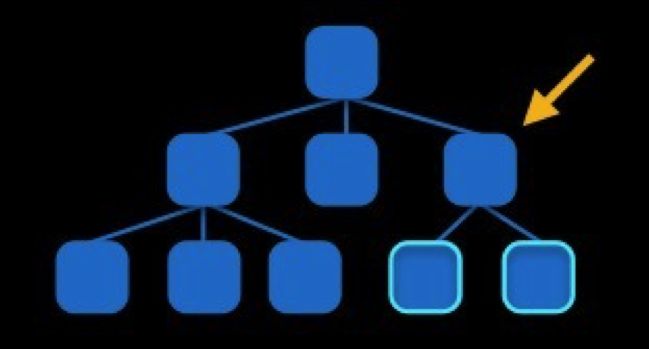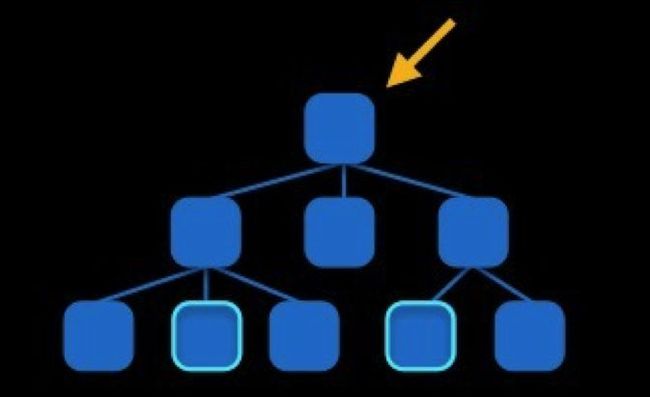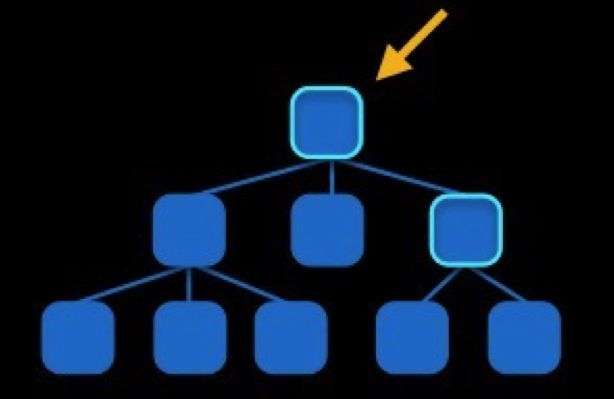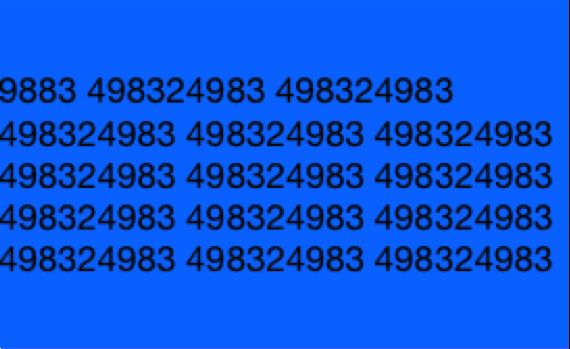Autolayout
Autolayout
- Autolayout是一种“自动布局”技术,专门用来布局UI界面的
- Autolayout自iOS6开始引入,由于Xcode4的不给力,当时并没有得到很大推广自iOS7(Xcode5)开始,Autolayout的开发效率得到很大的提升
- 苹果官方也推荐开发者尽量使用Autolayout来布局UI界面
- Autolayout能很轻松地解决屏幕适配的问题
Autolayout的2个核心概念
- 参照
- 约束
与 Autoresizing 区别
- 在Autolayout之前,有Autoresizing可以作屏幕适配,但局限性较大,有些任务根本无法完成
- 相比之下,Autolayout的功能比Autoresizing强大很多
拖线时造成的Autolayout的警告和错误
-
- 控件的frame不匹配所添加的约束, 比如 比如约束控件的宽度为100, 而控件现在的宽度是110
-
- 缺乏必要的约束, 比如 只约束了宽度和高度, 没有约束具体的位置
- 两个约束冲突, 比如 1个约束控件的宽度为100, 1个约束控件的宽度为110
代码实现Autolayout
代码实现Autolayout的步骤
- 利用NSLayoutConstraint类创建具体的约束对象
- 添加约束对象到相应的view上
- (void)addConstraint:(NSLayoutConstraint *)constraint; - (void)addConstraints:(NSArray *)constraints; 代码实现Autolayout的注意点
- 要先禁止autoresizing功能,设置view的下面属性为NO
view.translatesAutoresizingMaskIntoConstraints = NO; - 添加约束之前,一定要保证相关控件都已经在各自的父控件上 不用再给view设置frame
NSLayoutConstraint
- 一个NSLayoutConstraint对象就代表一个约束
创建约束对象的常用方法
/* view1 :要约束的控件 attr1 :约束的类型(做怎样的约束) relation :与参照控件之间的关系 view2 :参照的控件 attr2 :约束的类型(做怎样的约束) multiplier :乘数 c :常量 */ +(id)constraintWithItem:(id)view1 attribute:(NSLayoutAttribute)attr1 relatedBy:(NSLayoutRelation)relation toItem:(id)view2 attribute:(NSLayoutAttribute)attr2 multiplier:(CGFloat)multiplier constant:(CGFloat)c; - 自动布局有个核心公式 obj1.property1 =(obj2.property2 * multiplier)+ constant value
添加约束的规则(1)
- 在创建约束之后,需要将其添加到作用的view上
VFL语言
VFL示例
-
H:[cancelButton(72)]-12-[acceptButton(50)] canelButton宽72,acceptButton宽50,它们之间间距12
-
H:[wideView(>=60@700)] wideView宽度大于等于60point,该约束条件优先级为700(优先级最大值为1000,优先级越高的约束越先被满足)
-
V:[redBox]-[yellowBox(==redBox)] 竖直方向上,先有一个redBox,其下方紧接一个高度等于redBox高度的yellowBox
-
H:|-10-[Find]-[FindNext]-[FindField(>=20)]-| 水平方向上,Find距离父view左边缘默认间隔宽度,之后是FindNext距离Find间隔默认宽度;再之后是宽度不小于20的FindField,它和FindNext以及父view右边缘的间距都是默认宽度。(竖线“|” 表示superview的边缘)
VFL的使用
- 使用VFL来创建约束数组
创建一个字典(内部包含VFL语句中用到的控件)的快捷宏定义 NSDictionaryOfVariableBindings(...)
/* format :VFL语句 opts :约束类型 metrics :VFL语句中用到的具体数值 views :VFL语句中用到的控件 */ + (NSArray *)constraintsWithVisualFormat:(NSString *)format options:(NSLayoutFormatOptions)opts metrics:(NSDictionary *)metrics views:(NSDictionary *)views; 有了Autolayout的UILabel
在没有Autolayout之前,UILabel的文字内容总是居中显示,导致顶部和底部会有一大片空缺区域
 有Autolayout之后,UILabel的bounds默认会自动包住所有的文字内容,顶部和底部不再会有空缺区域
有Autolayout之后,UILabel的bounds默认会自动包住所有的文字内容,顶部和底部不再会有空缺区域
UILabel实现包裹内容
- 设置宽度约束为 <= 固定值
- 设置位置约束
- 不用去设置高度约束
基于Autolayout的动画
- 在修改了约束之后,只要执行下面代码,就能做动画效果
[UIView animateWithDuration:1.0 animations:
^{
[添加了约束的view layoutIfNeeded];
}];
Masonry框架的使用示例
下载地址: https://github.com/SnapKit/Masonry
//设置约束 - (NSArray *)mas_makeConstraints:(void(^)(MASConstraintMaker *))block; //如果之前已经有约束,则更新新的约束,如果没有约束,则添加约束 - (NSArray *)mas_updateConstraints:(void(^)(MASConstraintMaker *))block; //将之前的约束全部删除,添加新的约束 - (NSArray *)mas_remakeConstraints:(void(^)(MASConstraintMaker *make))block; 以下为代码使用实现布局效果: //添加两个控件 UIView *blueView = [[UIView alloc] init]; blueView.backgroundColor = [UIColor blueColor]; blueView.translatesAutoresizingMaskIntoConstraints = NO; [self.view addSubview:blueView]; UIView *redView = [[UIView alloc] init]; redView.backgroundColor = [UIColor redColor]; redView.translatesAutoresizingMaskIntoConstraints = NO; [self.view addSubview:redView]; //给蓝色View设置约束 [blueView mas_makeConstraints:^(MASConstraintMaker *make) { 14 make.left.equalTo(self.view.mas_left).offset(30);//和父view的左边间距为30; make.bottom.equalTo(self.view.mas_bottom).offset(-30);//和父view的底部间距为30; make.right.equalTo(redView.mas_left).offset(-30);//和红色view的间距为30; make.height.mas_equalTo(50);//蓝色view的高度为50 }]; //给红色View设置约束 [redView mas_makeConstraints:^(MASConstraintMaker *make) { make.right.equalTo(self.view.mas_right).offset(-30);//和父view的右边间距为30; make.bottom.equalTo(blueView.mas_bottom);//和蓝色view的底部对齐 make.height.equalTo(blueView.mas_height);//和蓝色view的高度相等 make.width.equalTo(blueView.mas_width);//和蓝色view的宽度相等 }];
制作九宫格样式的视图布局
- 填充一个View控件到父控件中,然后隐藏显示。设置相对位置。就会占据一定距离。














